

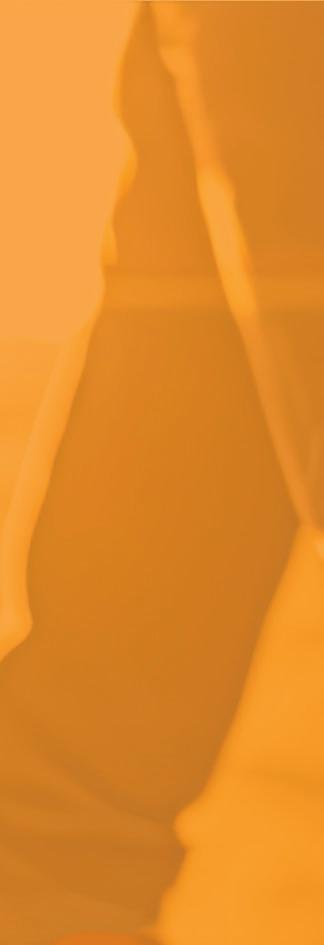






SUPPLEMENT TO: www.michigansthumb.com June 22, 2024 DIRECTORY to your health...
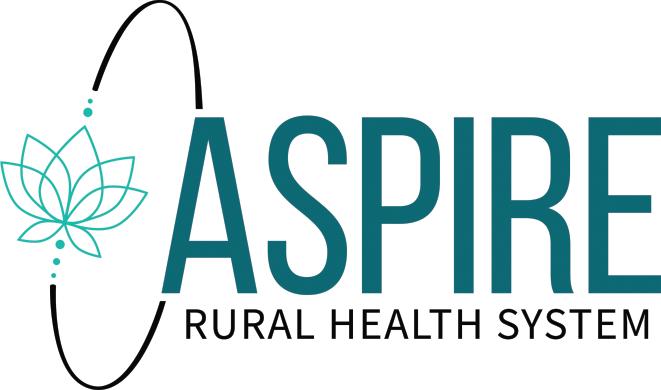


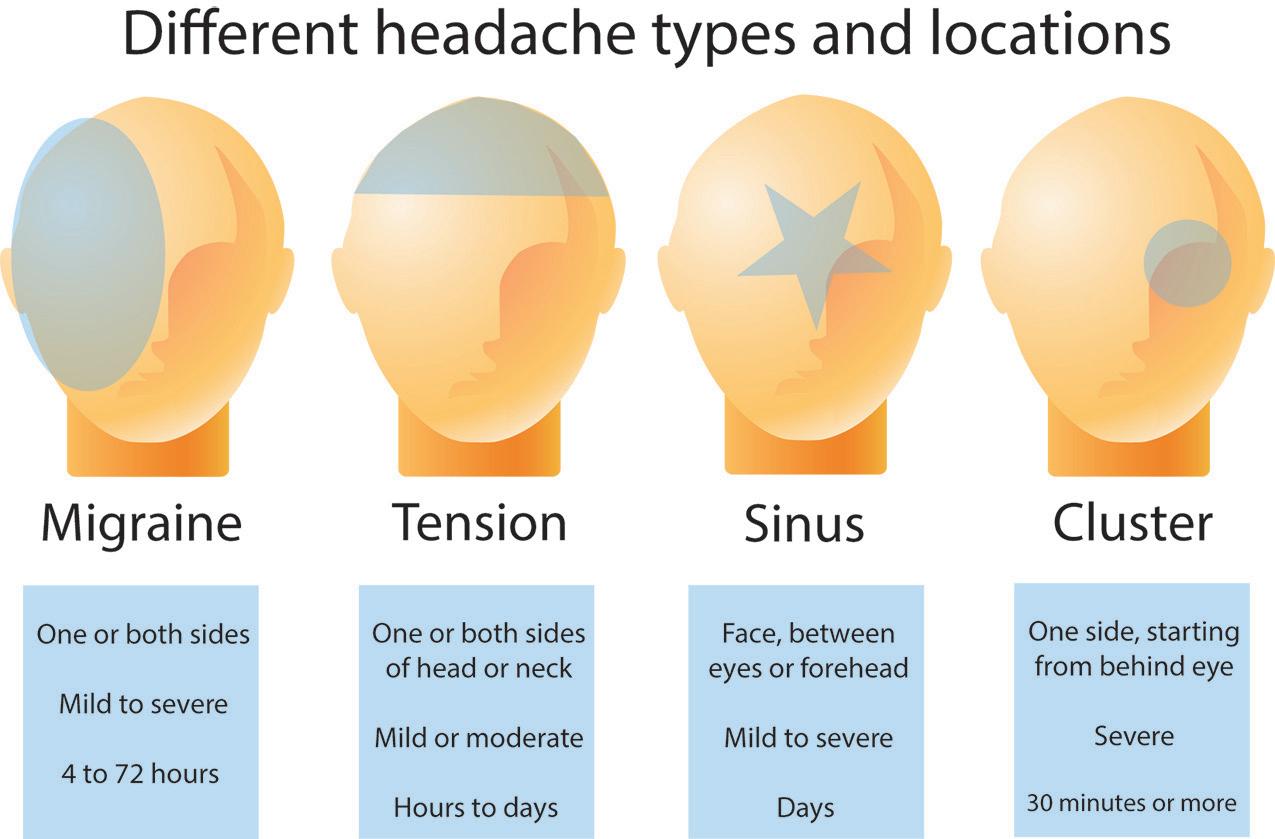


Headaches can be debilitating. One type of headache in particular often garners extra attention because it can be more severe than others.
Estimates suggest one billion people suffer from migraines. Migraines often affect adults, but they can be common in children as well. Although migraines produce pain in the head, the symptoms may be even more far-reaching.
With so many different types of headache — some with overlapping symptoms — it can be difficult to identify which is affecting an individual at any given time.
According to Brandeis Brockman, CRNP, BSN, MSN, a Pennsylvania-based nurse practitioner, fewer than 5 percent of people affected by headaches have been accurately diagnosed. A few significant distinctions separate migraines from other forms of headache. Penn Medicine and Temple Health note the following are some of those distinctions.
• Migraine headache is a neurological disease that can involve chemicals in the brain in nerve pathways.
• Migraines often produce an aura or light haze (a visual disturbance) minutes before patients feel pain. An aura may be characterized by blurred vision and blind spots that expand over time.
• Migraine pain typically occurs on only one side of the head at a time, but sometimes it can affect both.
• A person can experience sensitivity to sounds, touch or smells. Nausea often accompanies a migraine.
• Migraines may be preceded by a period characterized as the pre-headache phase. This features painless symptoms that manifest hours or days
michigansthumb.com HURON MEDICAL DIRECTORY JUNE 22, 2024 2
What constitutes a migraine? See migraine Page 10 Assisted Living & Memor y Care 989-217-9500 6305 Bluewater Cour t Marlette 989-872-8131 6086 Beechwood Drive Cass Cit y


Find the right doctor for your condition
The medical field is comprised of many professionals working in concert to keep patients healthy, which involves treating any conditions that arise. Individuals may be treated by various types of doctors in their lifetime, and each is an expert in his or her field. According to Medical News Today, most physicians are categorized as primary care or specialty care.
Navigating the health care system can be confusing. Recognition of the specialties of various types of doctors can make it easier to make it through that system.
• General practitioner: Also known as a family physician, or primary care doctor, these are the doctors patients are likely to encounter most often. They care for patients during routine checkups and screening tests; provide immunizations; and manage ongoing medical conditions. GPs also may be internists,
treating both common and complex illnesses.
• Pediatrician: Pediatricians specialize in the care of children from birth and up. Although there is no set age when patients will transition from a pediatrician to an adult doctor, Kids Health says the switch is typically made between the ages of 18 and 21.
• Geriatric medicine specialists: These doctors focus on treating elderly patients and the medical conditions that can develop as a person ages. Geriatric doctors work in private offices, nursing homes, assisted living facilities, hospitals, and some even make house calls.
• Endocrinologists: An endocrinologist is an expert in the study of the body’s hormones, says the Cleveland Clinic. They diagnose and treat many different condi-
tions that affect the endocrine system, including diabetes, reproductive issues and thyroid conditions.
• Dermatologist: Skin, hair and nail conditions are handled by a dermatologist. Dermatologists routinely treat conditions like acne, moles, scarring, rashes, and more.
• Nephrologists: Individuals with kidney diseases as well as high blood pressure and fluid and mineral imbalances will likely see a nephrologist.
• Ophthalmologist: Although many conditions of the eye can be diagnosed and treated by optometrists, ophthalmologists are medical doctors who can treat every kind of eye condition. They also can operate on the eyes, according to WebMD.
• Oncologist: Oncologists specialize in the diagnosis and treatment of cancer. They have subspecialties in specific types of cancer, and also may serve as radiation oncologists, who provide radiation cancer treatments.
• Otolaryngologists: Commonly referred to as ear, nose and throat doctors, these professionals treat diseases in these areas of the body. They also treat conditions that affect the neck and respiratory system.
• Pulmonologists: Those with conditions related to breathing issues, such as pneumonia, asthma, emphysema, and lung cancer, can seek out pulmonologists.
These are just some of the many different types of doctors people may visit in their lifetimes.
michigansthumb.com HURON MEDICAL DIRECTORY JUNE 22, 2024 3
The healing power of nature



Being in good health and avoiding various diseases often comes down to a combination of factors. Individuals may be aware that nutrition and exercise play important roles in personal well-being, but it appears that nature may provide its own medicinal benefits as well.
A number of studies have examined the potential healing components of being in nature. The World Health Organization released a report in 2023 titled “Green and Blue Spaces and Mental Health,” which indicated that time in nature improves mood, mindsets and mental health. This occurs regardless of whether that nature was “country” regions or urban areas. The following are some of the ways nature can have a healing effect.
• Immunity protection: Trees and plants emit aromatic compounds called phytoncides. When inhaled, these compounds can ignite healthy biological changes similar to the concepts of aromatherapy. When people walk in forests or other green areas, they often experience changes in the blood that are associated with protection against cancer, improved immunity and lower blood pressure, says Dr. Qing Li, a professor at the Nippon Medical School in Tokyo.
• Reduce stress: Stress is a catalyst for a number of adverse health conditions. The Mayo Clinic says stress can cause headache, muscle tension, fatigue, changes in sex drive, and a weaker immune system, among other things. Being outside in nature and away from work and home responsibilities can help reduce stress levels. Dr. Mathew McGlothlin, senior medical director with WellMed Medical Group, says being in nature provides stress relief.
UVB rays and effectively make vitamin D. Vitamin D is a nutrient the body needs to build and maintain strong bones. Vitamin D also regulates many other cellular functions in the body, and may be able to prevent cognitive decline.
• Inspires exercise: People may be more inclined to be physically active while outdoors. Hiking, cycling, swimming, and even strolls in the park all make the outdoors more fun.
• Get a brain break: When spending time in nature, attention is focused on the scenery, the animals and the rest of the environment. This may help quiet the rush of thoughts in the head that clutters the ability to think freely.
• Get vitamin D: The body naturally produces vitamin D from sun exposure. The National Institutes of Health says it is optimal to have sun exposure for five to 30 minutes a day, most days a week, to absorb
Exercise promotes heart health and helps people maintain a healthy weight.
Nature can have a healing effect, and more time outdoors can promote mental and physical well-being.
michigansthumb.com HURON MEDICAL DIRECTORY JUNE 22, 2024 4
3 notable health benefits of a round of golf

Playing a round of golf is a great way to spend a morning, afternoon or early evening. That’s particularly true when the weather is warm and a golf course is soaked in sunshine and cooled down by warm breezes whistling through the surrounding trees.
Though many see golf as recreation, the sport can offer some notable health benefits. The Royal and Ancient Golf Club of St. Andrews, which was founded in 1754 and has since grown from a small club to one with 2,500 members across the globe, published a golf and health report in 2020. That report highlights research indicating the ways golf promotes both mental and physical health, and such
evidence can make anyone feel better about spending a day on their nearest course. With that in mind, individuals can consider these three notable health benefits of playing golf the next time they’re thinking about visiting their local course.
1. Golf may help you live longer.
Frustrated golfers who can’t master their short game may suggest otherwise, but a study published in the Scandinavian Journal of Medicine and Science and Sports discovered a 40 percent reduction in mortality rates among 300,000 members of the Swedish Golf Federation. That corresponded to an increased life expectancy of roughly five
years and applied to golfers of all ages, genders and socio-economic backgrounds.
2. Golf can help combat disease.
A summary of findings conducted by researchers at the University of Edinburgh and published in the British Journal of Sports Medicine in 2016 found that golf can help prevent and treat 40 major chronic diseases, including diabetes, heart attack, stroke, depression, dementia, and cancers of the breast and colon. That link probably has something to do with golf being a physical activity that encourages people to embrace a less sedentary
See goLF Page 10





michigansthumb.com HURON MEDICAL DIRECTORY JUNE 22, 2024 5
We are Harbor Beach Community Hospital's Senior Life Solutions program designed to meet the unique needs of individuals typically 65 and older experiencing depression or anxiety related to life changes often associated with aging.
you would like more information, education, or would like to discuss support, please
(989) 479-0200 Anyone in Huron County facing distress related to COVID-19 without insurance is eligible for 6 free outpatient sessions. ✿ For 24 Hour Emergency Crisis Support 800.356.5568 ✿ For non-crisis assessment or care call 989.269.9293 ✿ For anonymous mental health screening visit HuronCMH.org Huron Behavioral Health works with many insurance plans and people of all ages. All services are confidential. Your Brain Health is Essential. Call Today.
If
call

Notable progress has been made in cancer diagnosis and treatment, increasing survival rates for many forms of the disease by a considerable margin. However, cancer diagnoses are on the rise. According to National Cancer Survivors Day®, in 2024 new cancer cases are projected to exceed two million in the United States for the first time ever.
After successful treatment, it’s not uncommon for cancer survivors to ask, “What now?” Although going into remission can inspire feelings of joy and gratitude, many cancer survivors face additional obstacles even after successful treatment.
• Emotional distress: Cancer patients may experience anxiety after receiving a diagnosis and


Challenges and health concerns for cancer survivors

even after they are declared cancer-free. A persistent fear that cancer will recur can cast a shadow over survivors’ ability to enjoy life. Some people may not be elated at having survived cancer, and may even experience survivor’s guilt. Individuals are urged to contact their doctors if they experience symptoms of anxiety or depression.
• Body image: Some cancer survivors struggle with body image, particularly if cancer treatment required a surgery that resulted in scarring. Cancer treatment also may cause hair loss or weight loss. Taking some medications, like steroids, may result in weight gain or puffiness in the face. Survivors

may not be happy with what they see in the mirror.
• Fatigue: Just because treatment is over doesn’t mean energy levels will rebound immediately. After treatment, individuals may tire easily and require extra assistance until they are fully back on their feet. This can be emotionally challenging or compel survivors to see themselves as burdens when asking for help.
• Medical problems: The American Cancer Society says people who had radiation therapy or received chemotherapy in the chest are at higher risk of heart problems. Those who had surgeries of the pelvis or abdomen may no longer be able to have
children. Survivors of bone and soft-tissue cancers may have lost part or all of a limb.
• Medical costs: While cancer is raging, patients may not be giving much thought to how to pay for treatment. Some patients may not have comprehensive health insurance coverage. Claims may be denied, and bills may start to pile up. There’s also the added burden of lost wages that occurred during treatment. The stress of financial pressures can be a challenge for survivors.
Although it can be good news to receive the all-clear after cancer treatment, many survivors face additional challenges once treatment ends.
Dairy is consumed in many forms, including cheese, milk, yogurt, butter, and ice cream. The debate rages on regarding the nutritional value of dairy. As with most foods, there are pros and cons to dairy consumption. Dairy is a convenient way for many people to get the calcium, vitamin D and protein necessary to keep their bones, muscles and heart functioning properly, says nutrition research scientists with the Harvard T.H. Chan School of Public Health. A study examining 2,000 men published by the British Journal of Nutrition found that those who ate fermented dairy products like yogurt and cheese had a smaller risk of coronary artery disease than those who ate less. Still, there are some concerns about dairy. A 2017 study funded by the National Cancer Institute that compared the diets of women diagnosed with breast cancer to those without breast cancer found that those who consumed the most American, cheddar and cream cheeses had a 53 percent higher risk for breast cancer. Regular consumption of dairy products also may be linked to prostate cancer. The Physicians Committee for Responsible Medicine reports milk and other dairy products are the top sources of saturated fat in the American diet, which can contribute to heart disease, type 2 diabetes and Alzheimer’s disease. Low-fat milk can reduce some of the risks of dairy consumption. Moderate consumption also may reduce any risks associated with dairy consumption.
michigansthumb.com HURON MEDICAL DIRECTORY JUNE 22, 2024 6
Did you know?
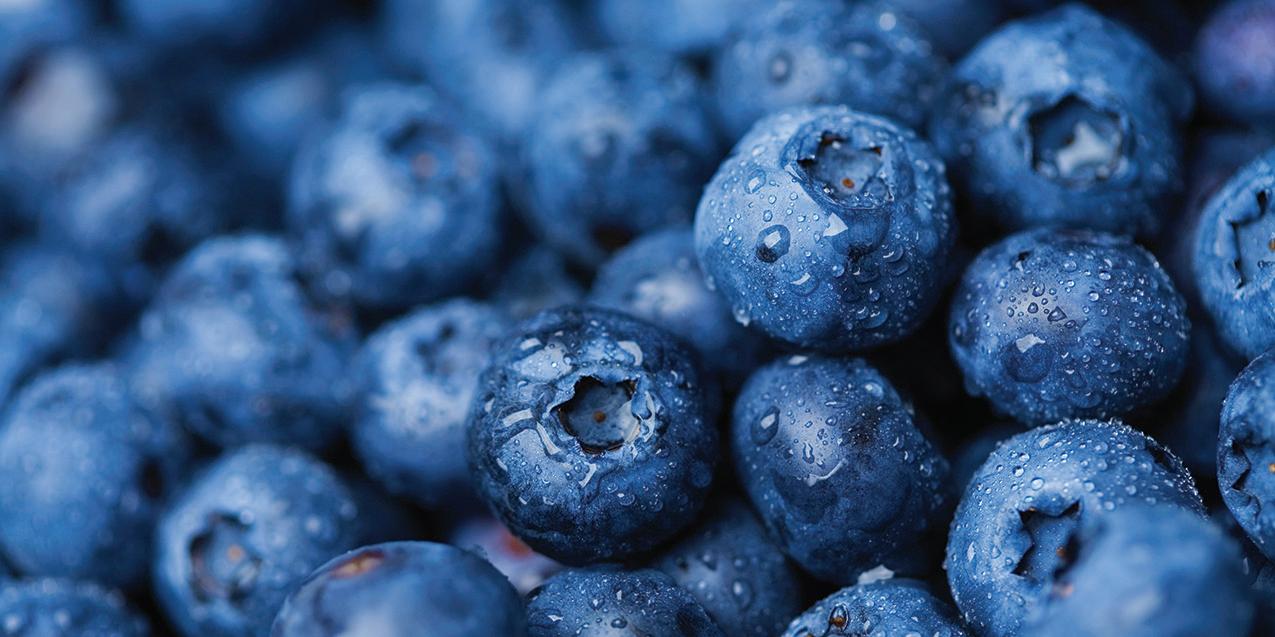
The nutritional benefits of blueberries
Are you ready to dig into a bowl of delicious blueberries? Perhaps you’re adding a handful to your morning smoothie? Regularly eating blueberries is not only tasty, it can be excellent for your overall health.
While the term “superfood” has become controversial because it is now seen as a marketing ploy and there’s no standardized list of criteria to designate a food as “super,” blueberries have often been touted as especially nutritious. That’s because blueberries are not only low in calories, they’re full of nutrients the body needs to thrive.
Healthline indicates blueberries are among the most nutrient-dense berries. A cup contains only 85 calories, and in that serving a person can enjoy 3.6 grams of fiber, 16 percent of the daily value (DV) of vitamin C; 24 percent of the DV of vitamin K; and 22 percent of the DV of manganese.
One of the main benefits of blueberries is that they are rich in antioxidants. Produced as a natural result of metabolism or exposure to pollution, cigarette smoke


and alcohol, free radicals are molecules that damage cells over time. Antioxidants create barriers around cells to help protect them from damage by free radicals.
The Cleveland Clinic says that the high soluble fiber content of blueberries can make them strong allies in the fight against cholesterol. Soluble fiber binds to bile in the gut. Bile is made of cholesterol and other substances that need to be removed from the body. Lowering cholesterol helps prevent or reduce risk of heart disease.
In relation to heart health, blueberries also may help reduce blood pressure, which can be beneficial for the heart and brain. Healthline reports that in an eight-week study, people with obesity who had high risk of heart disease noted a 4 to 6 percent reduction in blood pressure after consuming two ounces of freezedried blueberries per day. Additional studies have uncovered similar blood pressure-lowering abilities of blueberries.
Individuals concerned with keep-
See BLueBerrieS Page 11
Beach Specialt y Clinic Specializing in Thoracic & General Surger y Starting May 2024. To schedule an appointment call (989) 479-5024

Nicklaus Bradle y
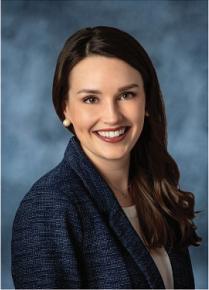


michigansthumb.com HURON MEDICAL DIRECTORY JUNE 22, 2024 7 210 S First Street • Harbor Beach 989- 479-3201 • w w w.hbch.org Dr.
Harbor
Your Safe Harbor for Great Healthcare ! Dr. Zarrish K han Accepting Ne w Patients
Dr.
Orthopedic Surgeon Harbor Beach
Dr. Laura Parks Family Medicine Harbor Beach Medical Clinic
Danielle
FNP-BC Family Medicine Port Hope Medical
428-1000
Family Medicine
Beach Medical Clinic (989) 479-3291
Harbor
Branislav Behan
Medical Clinic (989) 479-3291
(989) 479-3291
Brown,
Clinic (989)

How to reduce your risk for soft-tissue injuries


Soft-tissue injuries are a notable concern for anyone engaged in routine physical activity. The American Academy of Orthopaedic Surgeons notes that such injuries affect muscles, tendons and ligaments and often occur while engaged in physical activities like sports and exercise.
Soft-tissue injuries run the gamut from acute problems like sprains and contusions to more lasting conditions like tendinitis and bursitis that tend to arise from overuse. Seasoned athletes may see soft-tissue injuries as an unwanted yet unavoidable consequence. However, the AAOS notes that many such injuries can be prevented with proper conditioning and training.
• Wear appropriate attire. The AAOS recommends replacing athletic footwear as they wear out and wearing comfortable, loose-fitting clothing that allows for free movements and the release of body heat.
• Avoid overdoing it with any one type of workout.
A well-balanced workout regimen is not only a pathway to overall health but also a great way to prevent soft-tissue injuries. The AAOS advises individuals to adhere to a fitness regimen that balances cardiovascular exercise, flexibility and strength training. Limit each workout session to no more than one or two activities.
• Warm up before each workout. According to the Mayo Clinic, cold muscles are vulnerable to injury, so a body that goes from full resting position to one suddenly in the throes of a demanding workout is more likely to suffer a soft-tissue injury than one that gradually makes that transition. The AAOS advises warming up by running in place for a few minutes and breathing slowly and deeply before gently rehearsing the motions of the exercises to come. Warmup sessions increase athletes’ heart rates and promote blood flow that helps to loosen muscles, tendons, ligaments, and joints.
• Hydrate. Drinking enough water to prevent dehydration, heat exhaustion and heat stroke is another way for physically active individuals to reduce their risk for soft-tissue injuries. The AAOS notes that proper hydration involves drinking water before, during and after a workout. A pint of water 15 minutes before a workout and another after cooling down is recommended. In addition, the AAOS recommends having a drink of water every 20 minutes or so while exercising.
• Cool down after a workout. Cooling down for a period of roughly 10 minutes before fully stopping a workout can reduce risk for soft-tissue injuries. The AAOS recommends slowing motions and reducing the intensity of movements during a cooling down session.
• Stretch. Cooling down and stretching are not one and the same. After cooling down, slowly and carefully stretch
until reaching a point of muscle tension, holding each stretch for between 10 and 20 seconds. Inhale before a stretch and exhale as the stretch is released. The AAOS recommends performing each stretch only once and advises against stretching to the point of pain.
• Know when to rest. Rest is vital for recovery, which is equally important for avoiding injuries. The AAOS notes that fatigue and pain are sufficient reasons to take a day off.
• Commit to routine exercise. Make exercise part of your daily routine, and not just something you do on weekends. Off days are vital, but exercising only on weekends can increase a person’s risk for soft-tissue injuries.
Soft-tissue injuries sideline many athletes every day. Taking steps to prevent such injuries can help individuals stay the course with their fitness goals.
michigansthumb.com HURON MEDICAL DIRECTORY JUNE 22, 2024 8
Sunlight exposure: The bright and dark side of the sun
The sun is an important star in our solar system. The sun warms the Earth and promotes animal and plant life on the planet. The sun also is vital for human health.
The National Institutes of Health says the human body was built to make good use of the sun. Sunlight helps regulate sleeping patterns, keeping one awake during the day and sleeping soundly at night. Sunlight also helps the body produce vitamin D, which is necessary for immune system support and normal bone function. The sun can boost mood. Lack of sun exposure, especially in winter months, can increase the risk for seasonal affective disorder, which is a form of depression. According to the
World Health Organization, UV rays from the sun also can treat some health conditions, like skin ailments such as eczema and psoriasis. The sun also may help combat rickets or jaundice.
While there are many benefits of getting ample sunlight, there also are some downsides to the sun and UV exposure, particularly in regard to the skin. Yale Medicine says that too much sun exposure can lead to photoaging of the skin. Symptoms include wrinkling, loss of skin elasticity, hyperpigmentation, sun spots, and redness. Photodamage causes changes to DNA at the cellular level and in the deepest layers of the skin, so it can take years before the effects are noticeable.
But the damage already has been done.
Damage to the skin can happen to anyone, but often is more pronounced in people with pale or fair skin, light-colored eyes, and with blonde or red hair. These people burn easily and may not tan readily.
Overexposure to the sun also increases the risk for skin cancer, the most common cancer in the United States and elsewhere around the world. UV rays can cause changes to cells that make them rapidly grow and divide, leading to extra cells known as tumors. Cancerous tumors can form, and cancer may spread







michigansthumb.com HURON MEDICAL DIRECTORY JUNE 22, 2024 9
Providing Or thodontic Ser vices from our office in Bad Axe, Michigan to patients from communities including: Bad Axe, Cass City, Sandusky, Caro, Huron County, Sanilac County, Tuscola County, Harbor Beach, Por t Austin, Pigeon, Sebewaing, Kinde, Ruth, Marlette, Por t Sanilac, Decker ville, Snover, Ubly, Vassar, Por t Hope, Caseville, Thumb of Michigan S cott M. Behnan, DDS, MS 118 Nor th Hanselman St. • Bad Axe, MI 48413 • 989.269.6811 Braces for Kids • Invisalign for all ages Or thodontic treatment for adults • Most Insurances accepted The only Board- Cer tified Or thodontist in Huron County •Need to see a Doctor? •Dentist? •Go to Work? •Go Shopping? “Our Friendly, Personable, and Courteous Drivers will get you to your destination in a safe and timely manner!” 1513 Bad Axe Rd. • Bad Axe, Michigan 48413 800-322-1125 • 989-269-2121 • Fax 989-269-8631 www.tatbus.com Hours of Operation: Monday-Friday 5:00am-10:00pm • Saturday 8:00am-6:30pm • Sunday Closed Buses Are Outfitted With: •Handicap Accessible •All Buses Are Wheelchair Equipped •Comfortable Environment County-Wide Transportation Every City and Village Huron Transit Corporation THUMB AREA TRANS IT Huron County Residents Do You Need A Ride???
See SunLigHt Page 11
Age-based calorie guidelines for men
The human body changes quite a bit as a person ages. A glance at a man’s face is a testament to the changes men’s bodies undergo during their lifetimes, as boys are not born with facial hair but begin to grow it during puberty.
Men’s bodies indeed undergo significant changes during their lifetimes, and that’s reflected in various recommendations from health care experts. Men’s dietary needs change as their bodies age, and calorie consumption guidelines can help them avoid overeating. That’s no small benefit, as the MD Anderson Cancer Center notes the consequences of overeating are wide-ranging and include:
• Feeling tired, sluggish or drowsy
• Discomfort
• Overexertion of the organs, which must secrete extra hormones and enzymes to break food down
• Heartburn, which results when the stomach produces hydrochloric acid to break down food. When that hap-
pens, acid can back up into the esophagus.
• Temporary feelings of being hot, sweaty or dizzy, which can occur as metabolism speeds up in an effort to burn extra calories.
Each of those side effects is unpleasant but preventable. Men who recognize calorie consumption needs change as their bodies age can alter their diets so they avoid overeating and all the negative side effects that come with it.
The National Institutes of Health notes that calorie needs differ by age and also by physical activity levels. Men can keep these guidelines from the U.S. Department of Health & Human Services and the United States Department of Agriculture in mind as they plan their diets.
Not Active
• Age 19 to 30 years: Between 2,400 and 2,600 calories per day
• Age 31 to 50 years: Between
2,200 and 2,400 calories per day
• 51 years and older: Between 2,000 and 2,200 calories
Somewhat Active
• Age 19 to 30 years: Between 2,600 and 2,800 calories per day
• Age 31 to 50 years: Between 2,400 and 2,600 calories per day
• 51 years and older: Between 2,200 and 2,400 calories per day
Very Active
• Age 19 to 30 years: 3,000 calories
• Age 31 to 50 years: Between 2,800 and 3,000 calories
• 51 years and older: Between 2,400 and 2,800 calories
It’s important that men recognize that all calories are not the same. Certain calories are characterized as “empty” because they are found in foods that provide little or no nutritional value. Indeed,
See guideLineS Page 11
MIGRAINE GOLF
Continued From Page 2
before the migraine, and include mood swings, food cravings and stiffness of the neck.
• Some migraines do not produce any head pain, but they may feature other notable migraine symptoms.
• When pain hits, it can be mild to debilitating. Many people get severe pain that makes it difficult
to function. A migraine can last for hours or even days.
• Extreme fatigue may set in with migraines. People may go to bed to block out noise and light.
If headaches occur frequently or persist, it is a good idea to discuss symptoms with a doctor. Something more potent than over-the-counter pain relievers may provide relief from migraines.

Continued From Page 5
lifestyle. Indeed, the R&A notes that additional studies have found that risk factors for heart disease and stroke, including high blood pressure, are reduced among people who play golf.
3. Golf promotes social interaction. The Alzheimer’s Society reports that social isolation can increase a person’s risk for dementia by roughly 60 percent. People who play golf tend to play in groups of two, three or four, and that
social interaction can promote social interaction among people of all ages. Social isolation also has been linked to additional mental health issues, including anxiety and depression, so activities like golf that encourage social interaction can help people safeguard their mental health.
A round of golf may be widely viewed as a recreational activity. However, a day on the links also provides some notable health benefits.
michigansthumb.com HURON MEDICAL DIRECTORY JUNE 22, 2024 10
A cataract is a clouding of the naturally transparent lens of the eye that can occur as one ages. Natural proteins in the lens clump together and can cloud the eye.
The National Eye Institute says most cataracts develop with age, as more than half of all Americans age 80 or older either have cataracts or have had surgery to remove them.
But cataracts can occur for other reasons, such as after an eye injury or after surgery for another vision problem. The American Academy of Opthalmology says cataracts can make it seem like a person is looking through a foggy or dusty car windshield. Everything is hazy, blurry or less colorful. Additional vision changes associated with cataracts include extra light sensitivity; seeing bright colors as faded or yellowed; seeing double or a ghosted image; and difficulty seeing at night.
Using brighter lights at home or getting a new eyeglasses prescription can help manage cataracts in their early stages. An eye doctor may suggest surgery if cataracts are getting in the way of daily activities. Surgery removes the clouded lens and replaces it with a new, artificial lens.
BLUEBERRIES
From Page 7
ing their brains sharp may want to consider adding blueberries to the mix of foods they eat regularly. A study in The American Journal of Clinical Nutrition uncovered cognitive function improved when participants ate about 3⁄4 cup of blueberries per day. Since blueberries lower blood pressure, more blood can flow to the brain, which improves cogni-
tive function.
BBC Good Food says blueberries also are low in sugar and high in fiber, which gives them a low glycemic index. This means blueberries can potentially control blood sugar levels.
Blueberries are powerhouses of nutrition and people of all ages can benefit from consuming them regularly.



from the skin to other organs of the body, says the NIH. Basal cell and squamous cell carcinomas affect more than two million people each year in the U.S. Melanoma is less common but more serious, affecting roughly 68,000 Americans each year.
The Dallas Dermatology Center says
about 10 to 30 minutes of safe sun exposure each day can help a person get the benefits of vitamin D and other perks of the sun without the harmful side effects.
Individuals concerned about sun exposure should speak with their dermatologists to determine healthy ways to get some sun.
WebMD notes it’s possible to stay within a calorie budget eating low-quality foods that lack nutrition. Doing so negates the benefits of planning and consuming a diet that adheres to HHS
and USDA calorie guidelines. Men are urged to work with their physicians and/ or a certified dietitian or nutritionist to develop a dietary plan that provides sufficient nutrition and stays within recommended calorie intake guidelines.





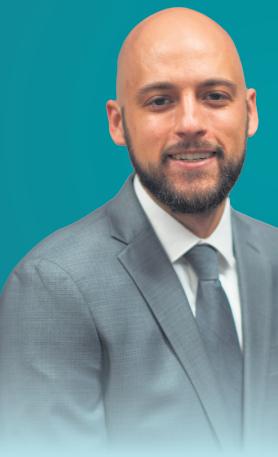





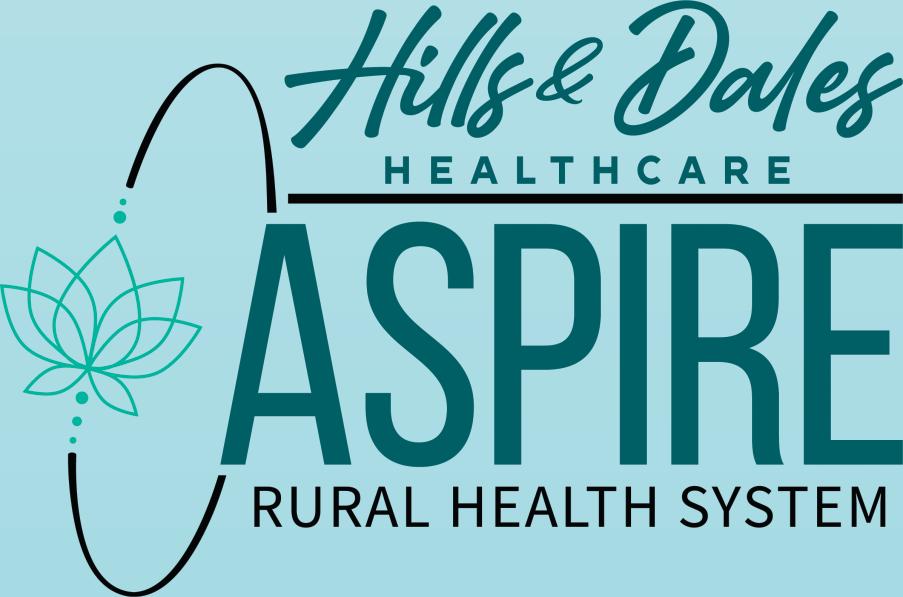

michigansthumb.com HURON MEDICAL DIRECTORY JUNE 22, 2024 11
Continued
Continued
Page
Continued From Page 10
From
9
GUIDELINES 989-912-6575 684 N. Por t Crescent | Bad Axe hdhlth.org HENRY KOZDRON , DO | JAMIE KOZDRON , MD | EMILY PUZ AN , FNP-BC HILLS & DALES AT BAD AXE Same day appointments available!
SUNLIGHT
Did you know?


Activities that can promote cardiovascular health
Resolving to be physically active is an important step towards heart health and overall well-being. Exercise is one of the most effective tools for strengthening the heart and avoiding various illnesses, including high cholesterol, that can affect cardiovascular health, according to Johns Hopkins Medicine.
strength and offer additional benefits like improving balance.



Although any exercise can be beneficial, there is a fitness recipe designed to be the most effective for strengthening the heart and helping it to work to its ful potential. Here are the guidelines recommended by the American Heart Association and Johns Hopkins Medicine.
• Get 150 minutes per week or more of moderate-intensity aerobic activity or 75 minutes per week of vigorous-intensity aerobic activity, or a combination of both. These activities can include running, cycling, swimming, and others that will get the heart pumping.
• Incorporate moderate- to high-intensity muscle-strengthening activity at least two days a week.
• Strength training should be designed to work the entire body. It doesn’t have to be traditional weightlifting, either. Body weight exercises, yoga, Pilates, and even tai chi can build
• Consider HIIT exercises. HIIT stands for high-intensity interval training, which involves exercising as hard as one can for a short period, and then resting briefly before exercising hard again for a short period. While there are many different HIIT programs, UT Southwestern Medical Center says a popular one involves exercising hard for four minutes, followed by three minutes of recovery time, for four cycles total.
• While stretching, flexibility and balance exercises do not directly affect heart health, they do help one stay flexible and free from joint pain and other issues that can sideline a person from exercise. Doing what one can to protect against falls and reduce risk of being sedentary will benefit the heart in the long run.
• Don’t discount everyday activities in relation to how they can enhance heart health. Walking, gardening, playing with children, or tossing a ball to a family pet are beneficial aerobic activities.
Heart health is something to take seriously, and exercise plays a key role in strengthing the heart.
michigansthumb.com HURON MEDICAL DIRECTORY JUNE 22, 2024 12 Bill MacAlpine II, Manager Our Family Ser v ing Your Family Since 1933 Bur ial & Cremation Pre-Ar rangements Militar y • Monuments MacAlpine Funeral Home, Inc. 1-800-777-5753 w w w.mac alpinefuneralhome.com 110 E . M AIN • KINDE 989-874-4040 F l 302 N . HANSELM AN • BAD A XE 989-269-6409



























































